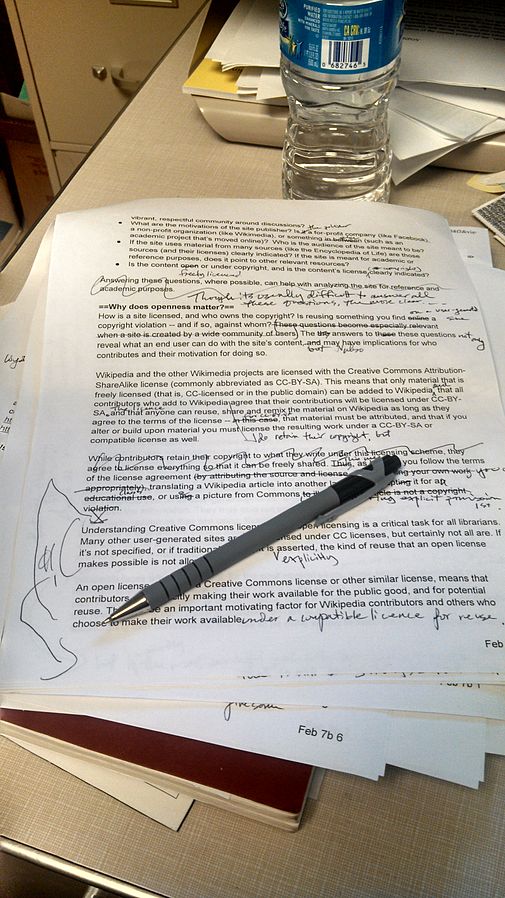

When we read books or shorter essays, such as those published at Current, we generally take certain things for granted. We expect that the book or essay will be free of factual and typographical errors, sentences should read smoothly, the general argument of the piece should be clear and accessible, and so on. Whenever these basic expectations are not met, we are at least surprised or mildly annoyed. Depending on the magnitude of the violations of these expectations, we might even get really flustered. Indeed, many years later, I still remember this review of an important book from a top academic press in my field that noted: “The quality of the proofreading and the copyediting—which tolerates sentence fragments, innumerable random commas, and at least one ‘infer’ for ‘imply’—would be unworthy of a book emerging from a much less distinguished press at a much lower price.”
Eek!
I have been thinking with profound gratitude over the past couple of weeks, as I worked through the copyedited version of my book, Cultural Christians in the Early Church, that editors and copyeditors are the unsung heroes of the publishing world. When their work is done well, the reader does not notice. Only when there are problems do readers wonder: how did the editors (and the author as well, of course!) miss this?
It is humbling to find on this round of reading my book manuscript, just how many little errors escaped my notice after all the rounds of (my own) proof-reading. And then there are these sentences that are technically grammatically sound, but they just don’t flow well. At least, there was nothing in my manuscript that could rival the exceedingly embarrassing typo in the word “ships” in the draft of one of my dissertation chapters.
To be fair, we humans, unlike ChatGPT will never produce absolutely perfect prose, as far as grammar and spelling go. We aim for flawless writing, but I have seen enough tiny typographical and other errors in the best of books from the best of presses to realize that 100% perfection is difficult to achieve. But good editors and copyeditors minimize the chances of these errors staying in the book or essay all the way through publication.
Speaking of good prose, I have heard a number of people remark on the high quality of writing in Current’s feature essays. There is quite a process that goes into it. Obviously, Current writers are really good writers! That goes a long way, but it is only the starting point. Editors and copyeditors must edit even the work of, say, Pulitzer prize winning historians and Nobel prize winning novelists. Editing, in other words, is the essential part of the process for even the best writing of the very best writers.
At Current, each essay first goes to one of several editors (for book reviews, that’s my task) who does a first round of editing, smoothing the prose as needed, and flagging any questions that the author may need to address. After that, the essay goes on to the copyeditor (the amazing Eric Miller, who is a gifted writer himself). Finally, the author gets to review the edited essay and make any final changes. Each and every step of this process greatly improves the final product, as I can attest from watching my own essays go through it. If you think this process sounds intense, by the way, there are publications that go through even more rounds of editing, and may also employ fact-checkers whose work it is to verify all content claims prior to publication.
Thinking about this process is discouraging in a way. It bursts the bubble—or myth—that there are great writers out there, who just crank out amazing work, and it is perfect straightaway. Fictional or fictionalized accounts about writers propagate this mystique. On the other hand, I find it highly encouraging to think that the work of editors and copyeditors really makes a difference, taking even good writing to another level.
I remind of this reality to students, who often find the writing process so deeply frustrating, precisely because they are aware of the difference between the quality of the fruits of their labors and what they read in published books and magazines. We may not think of it in those terms, but all professors function as editors for their students—we comment on our students’ papers in detail, we require revisions, and we try to provide feedback that will help these writers grow. One emerita in my department is reported to have gone through multiple pens on some student papers. That, at least, hits me as too much of a good thing.
If you would like to learn more about the work of editors and copyeditors, I recommend this insightful and humorous essay by Joel J. Miller, intriguingly titled “First Thing We Do, Let’s Kill All the Copy Editors?” (but as he himself would assure you, no copyeditors were harmed in the writing of the piece). He considers the perspective of some authors who are less thrilled about the prospect of copyediting, while explaining the value of that work. Another fun read, if you want to know more about how copyeditors think about their work, is Jeff Reimer’s essay: “The World Through a Copyeditor’s Eyes.” Copyeditors are just not quite like the rest of us, ya know?
On a side note, editing is one big difference between Current feature essays and blog posts, like the ones here at the Arena. I quickly proof-read anything that is posted on the Arena, but nothing more. It’s a wild west over here, friends. Caveat lector.